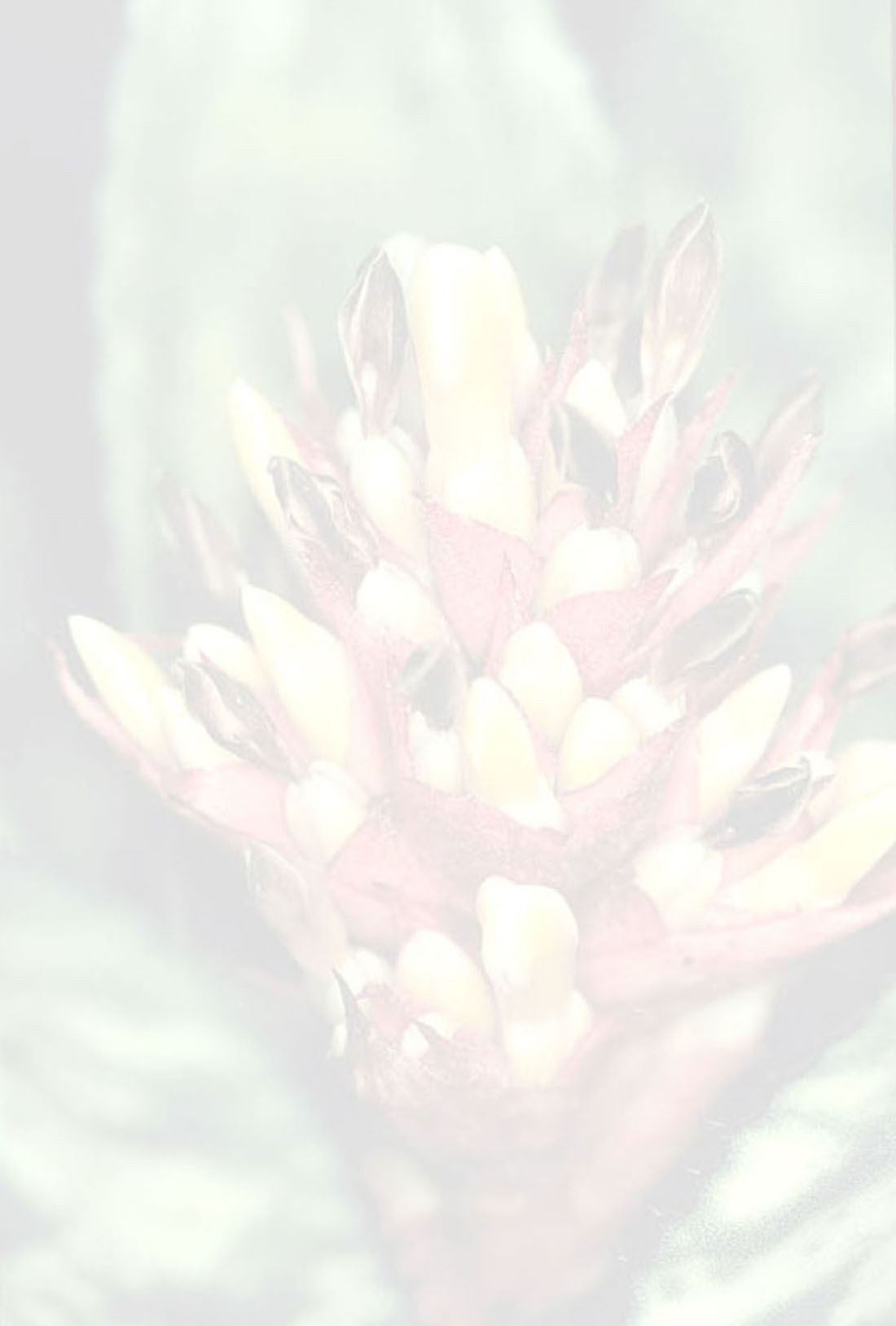


plant terrestrial, flowering 7580 cm tall, stoloniferous; stolons 2045 Χ 0.81.5 cm, rigid, bearing dark castaneous cataphylls with spinose margins toward the base. leaves 2028 in number, rosulate, arcuate, coriaceous, forming a funnelform rosette; sheath elliptic, 1517 Χ 9.5 cm, dark castaneous on both sides toward the base, densely and minutely brown-lepidote on both sides; blade sublinear, slightly narrowed toward the base, 60102 Χ 5.76.2 cm, green, inconspicuously white lepidote on both sides, apex acute to long mucronate, margins subdensely spinose (611 mm apart) except for the densely spinose base and apex (here 13 mm apart); spines narrowly triangular, 12.2 mm long, 0.51 mm wide at the base, castaneous toward the apex, antrorsely uncinate. inflorescence: peduncle erect, ca 27 cm long, 0.91 cm in diameter, green, subdensely white lanate; peduncle bracts narrowly lanceolate, acuminate, 56 Χ 11.6 cm, erect, distinctly nerved, sparsely to subdensely spinulose on the margins, densely white lepidote mainly toward the base, with fimbriate trichomes, distinctly exceeding the internodes, narrow and partly exposing the peduncle, thin in texture, straw-colored; fertile part simple, cylindrical, shorter than the leaves, erect, 20 Χ 4.55.5 cm (excluding the petals); axis 0.61 cm in diameter, straight, subangulate, green, subdensely whitish to castaneous lepidote with fimbriate trichomes; floral bracts subtriangular-lanceolate to broadly ovate, 1020 Χ 610 mm, acuminate-caudate, the basal ones equaling to slightly shorter than the sepals, the upper ones slightly shorter than the ovary, suberect to spreading with the flowers, thin in texture (paleaceous), entire, distinctly nerved, ecarinate, densely pale castaneous lepidote at the base and white lepidote toward the apex of fimbriate trichomes. flowers 4055 in number, subdensely and polystichously arranged, sessile, 2.73.2 cm long, fragrant, in an internal angle of 45° with the main axis to nearly spreading at anthesis; sepals distinctly asymmetrical, 1112 Χ 89 mm, the lateral membranaceous rounded wing nearly equaling the mucro, green except for the white-hyaline lateral wing, sparsely and minutely white to palecastaneous lepidote, ecarinate, connate at the base for 23 mm, apex mucronulate with a mucro of 23 mm long; petals narrowly subspathulate, 1820 Χ 5 mm, free, white, suberect to recurved, without any appendage, bearing 2 conspicuous linear callosities about equaling the anthers. stamens: filament 67 mm long, terete, white, the antesepalous ones free, the antepetalous ones basally adnate to the petals for 35 mm; anther 56 mm long, dorsifixed slightly below the middle, white, base distinctly bilobed, apex caudate. pistil: stigma conduplicate-spiral, cylindrical, white, blades ca 5 mm long, margins minutely crenulate; ovary obovoid, ca 12 mm long, ca 7 mm in diameter at the apex, subdensely to sparsely and minutely castaneously lepidote; epigynous tube funnelform, ca 3 mm long; placentation apical; ovules obtuse. fruits unknown.Edited from (27-08-2014): Leme et al. 2014. (protologue) Miscellaneous New Species of Brazilian Bromeliaceae III .